-
A Temple Watching Over the Obama Domain
After a tumultuous period of civil war that lasted more than a century, Japan was unified by Tokugawa Ieyasu (1543–1616), who became the first Tokugawa shogun in 1603. Kyogoku Takatsugu, an ally of the Tokugawa family, was then appointed lord of Wakasa Province and began construction of Obama Castle, which was completed in 1641 by Sakai Tadakatsu (1587–1662), the first lord of the Obama domain. Surrounded on three sides by Obama Bay and the Kita and Minami Rivers, Obama Castle was known as a mizuki, or “water castle.”
Mantokuji Temple is located to the southeast of Obama Castle, about 10 minutes away by car. It was frequently visited by the lords of the area, including the aforementioned Kyogoku Takatsugu and the Sakai family. The temple was originally located on the bank of the Otonashi River and was called Gokurakuji. After a devastating fire, it was rebuilt at the current location at the beginning of the Edo period (1603–1867) and was named Mantokuji.
It was said that even sinners would be saved if they came onto the grounds of Mantokuji Temple. It was Wakasa Province’s only kakekomidera, a temple where women could seek shelter and eventual divorce from abusive husbands. It is no surprise that many feel enveloped by a sense of compassion when visiting the majestic and calm precincts of Mantokuji. -
-
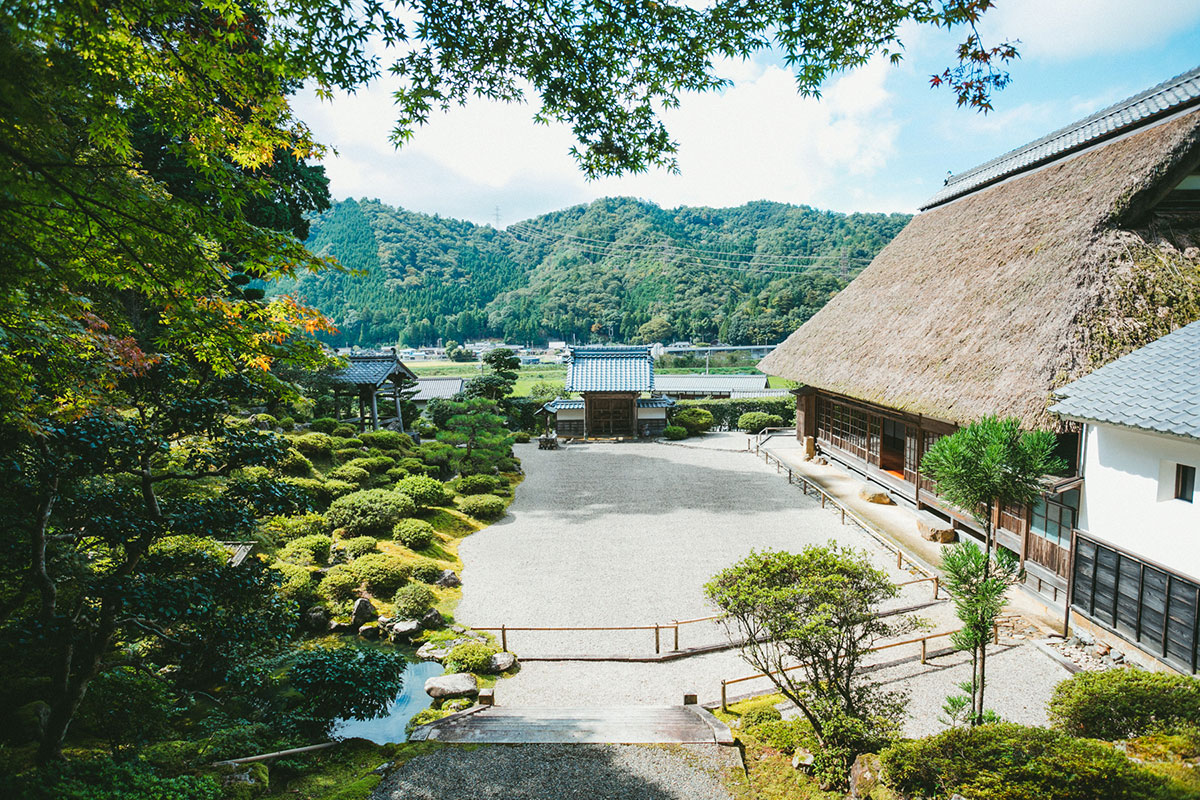 Garden and Shoin-style (Samurai-style architecture of the Muromachi period, 1336-1573) building seen from the stairs
Garden and Shoin-style (Samurai-style architecture of the Muromachi period, 1336-1573) building seen from the stairs
-
-
A Garden and Main Hall Conveying the Culture of the Samurai Class
The chief attraction of Mantokuji is its resplendent garden that greets you as you pass through the main gate. The garden covers 1,800 square meters and utilizes the natural slope of the surrounding mountains, which makes it appear even larger. Beyond a wide stretch of white gravel, the hillside is covered with well-pruned bushes and trees, and a large, 2.2-meter stone representing Dainichi Buddha (the cosmic Buddha) is placed in the center.
About 200 maple trees of various sizes encircle the garden, creating a spectacular palette of red and yellow in the fall. Because of this, the garden at Mantokuji was selected as one of Japan’s top 100 spots for viewing autumn foliage. Each season offers its own delights for the eyes, including the famous colorful azaleas that bloom in May and June.
Go past the garden and up a flight of stone steps to find the temple’s main hall, which stands facing the mountains beyond the main gate. After passing beneath the low-hanging branches of large maple trees, you will see the imposing facade of the hall. Its sliding wooden doors are paneled with narrow horizontal slats in a style called mairado, an architectural feature representative of samurai culture. -
-
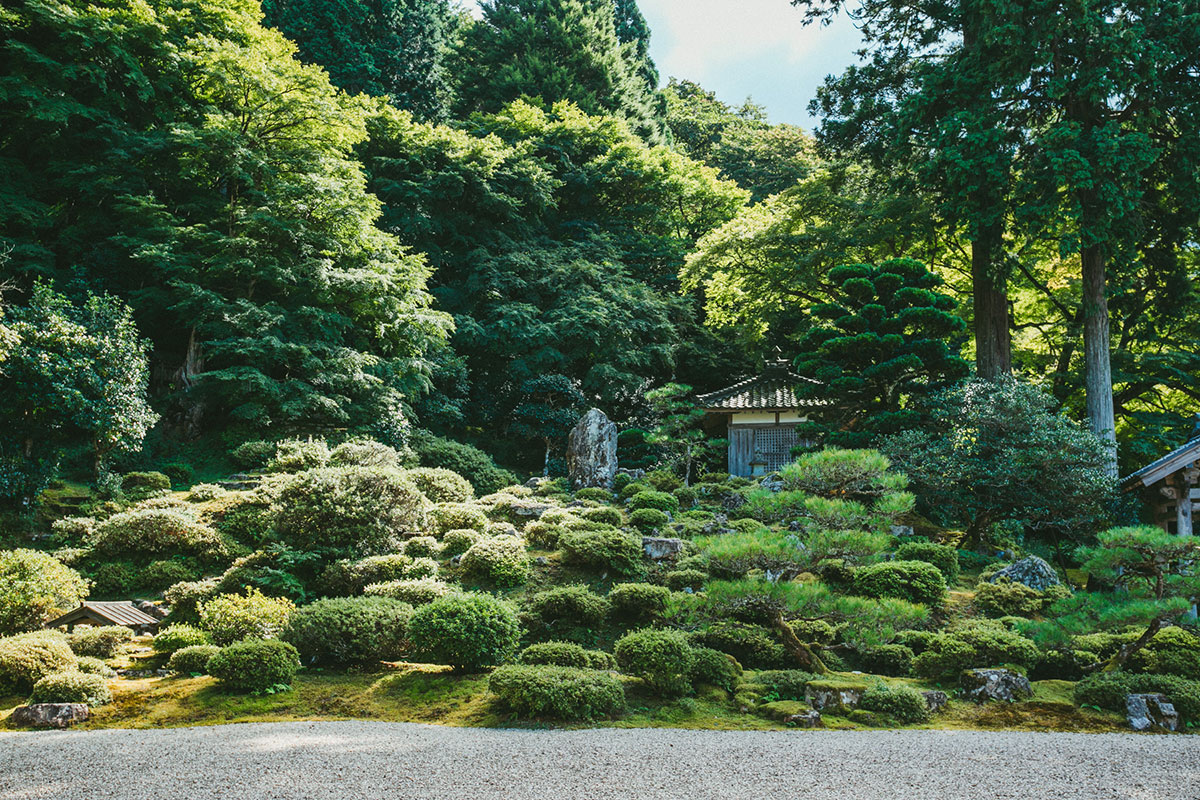 The stone garden seen from the tatami room
The stone garden seen from the tatami room -
 Autumn leaves over the stairs and the main hall
Autumn leaves over the stairs and the main hall
-
-
Enduring Prayers of the Sakai Family
The main hall of Mantokuji enshrines the temple’s principal object of worship, a seated statue of Amida Buddha (the Buddha of Immeasurable Light and Life). The dais is relatively new, but the statue itself was made in the late Heian period (794–1185). It is carved from hinoki cypress using the yosegi-zukuri joined woodblock technique. Amida Buddha sits on a rectangular pedestal with a gentle, calming expression, both hands held in a mudra (symbolic gesture) of welcome. The statue was originally the main object of worship at Gokurakuji Temple and was moved to this location when the temple was reconstructed as Mantokuji.
(THE ORIGINAL TWO PARAGRAPHS FOLLOW)
The main hall enshrines the temple’s principal object of worship, a seated statue of Amida Buddha (the Buddha of Immeasurable Light and Life). The dais is relatively new, but the statue itself was carved in the late Heian period (794–1185). It was originally the main object of worship at Gokurakuji Temple and was moved to this location when the temple was reconstructed as Mantokuji.
The statue of Amida Buddha is made of hinoki cypress using the yosegi-zukuri joined woodblock technique. The deity is seated on a rectangular pedestal with a gentle, calming expression, both hands held in a mudra (symbolic gesture) of welcome.
A traditional thatched-roof building next to the garden was used to entertain important guests, including the Sakai family, and contains many works of arts and other treasures. The overhead transoms that divide the rooms are decorated with ink paintings by Sakai Tadatsura (1752–1806), the ninth lord of the Obama domain. Other well-preserved treasures include hanging scrolls depicting Fudo Myo-o (the Immovable Wisdom King) with three children and Miroku Bodhisattva (believed to be the Buddha of the Future), both designated Important Cultural Properties. -
-
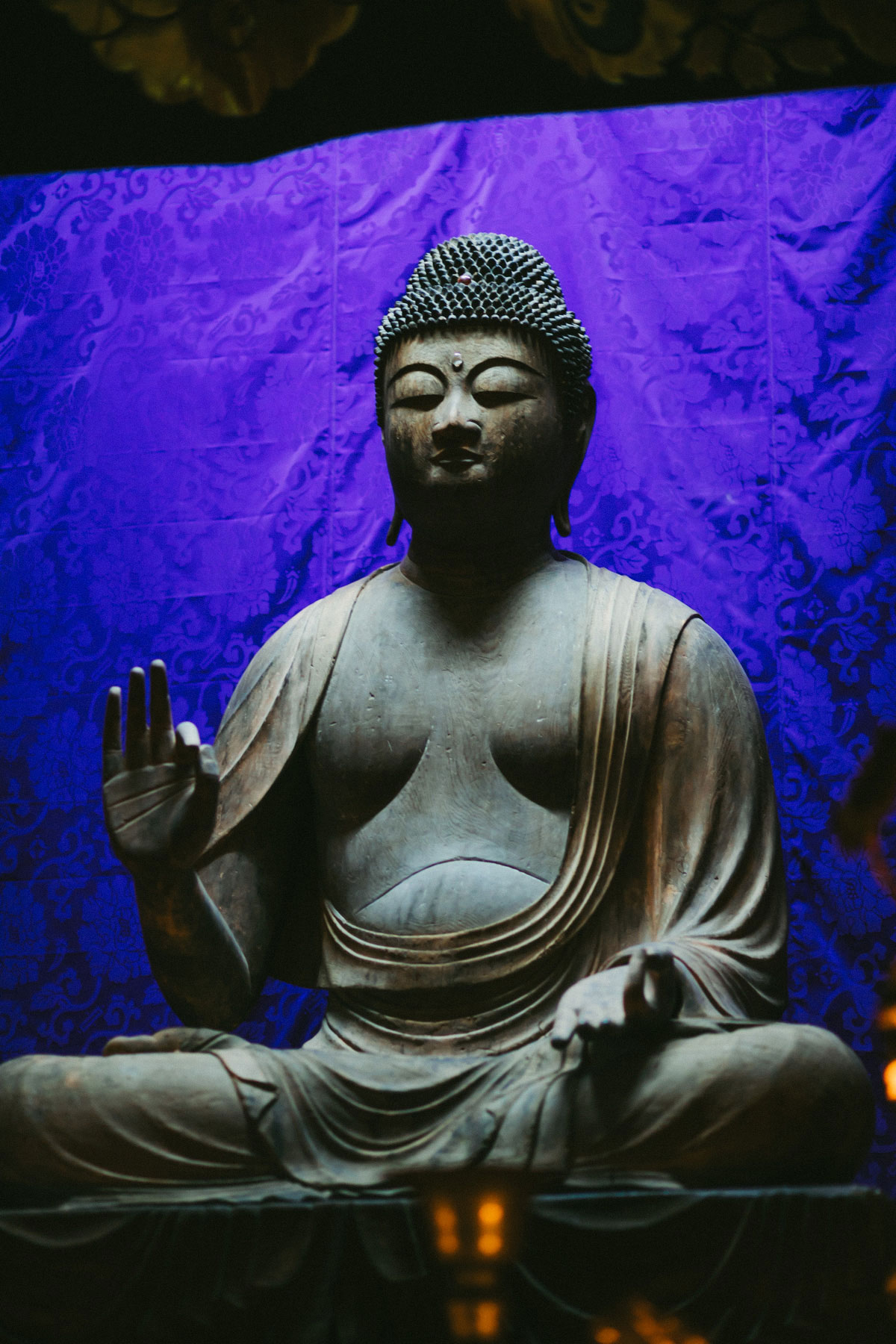 Seated statue of Amida Nyorai (Amida Buddha)
Seated statue of Amida Nyorai (Amida Buddha) -
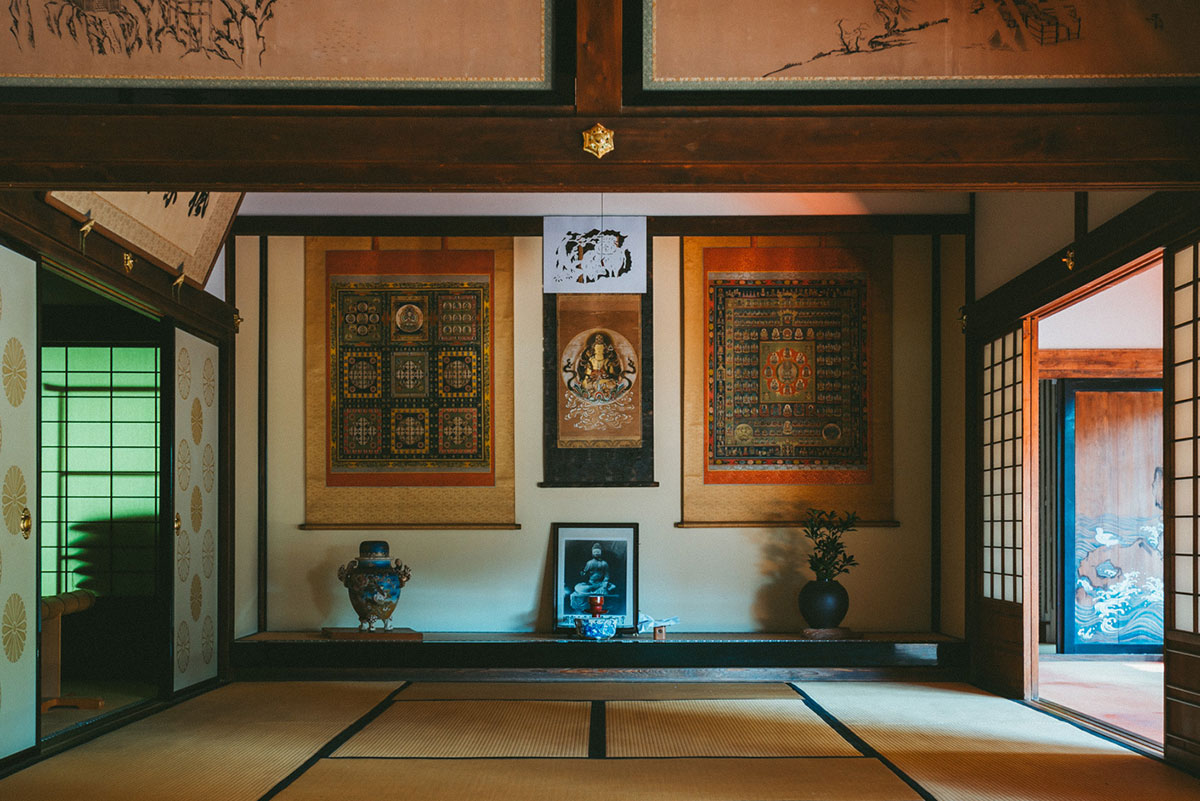 Scroll of Maitreya Bodhisattva hanging in the tatami room
Scroll of Maitreya Bodhisattva hanging in the tatami room -
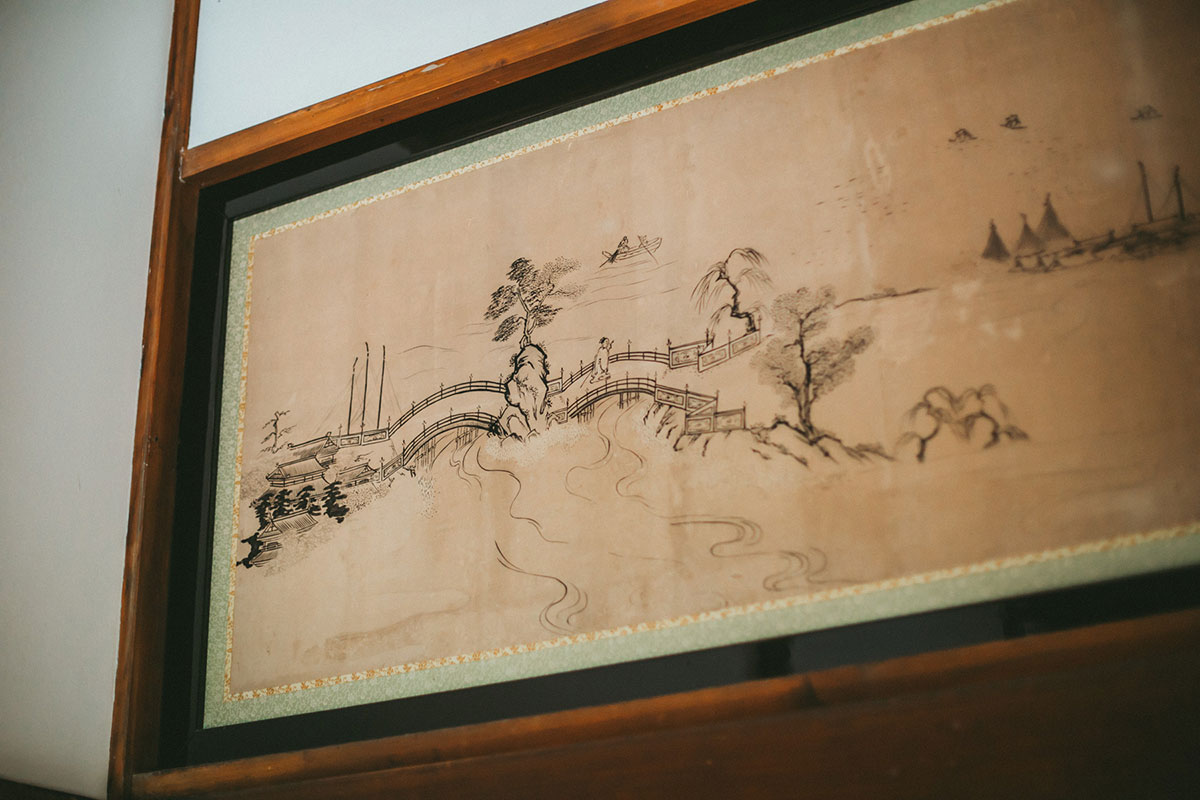 Suiboku-ga (ink painting) said to have been painted by Lord Tadataka Sakai
Suiboku-ga (ink painting) said to have been painted by Lord Tadataka Sakai
-
